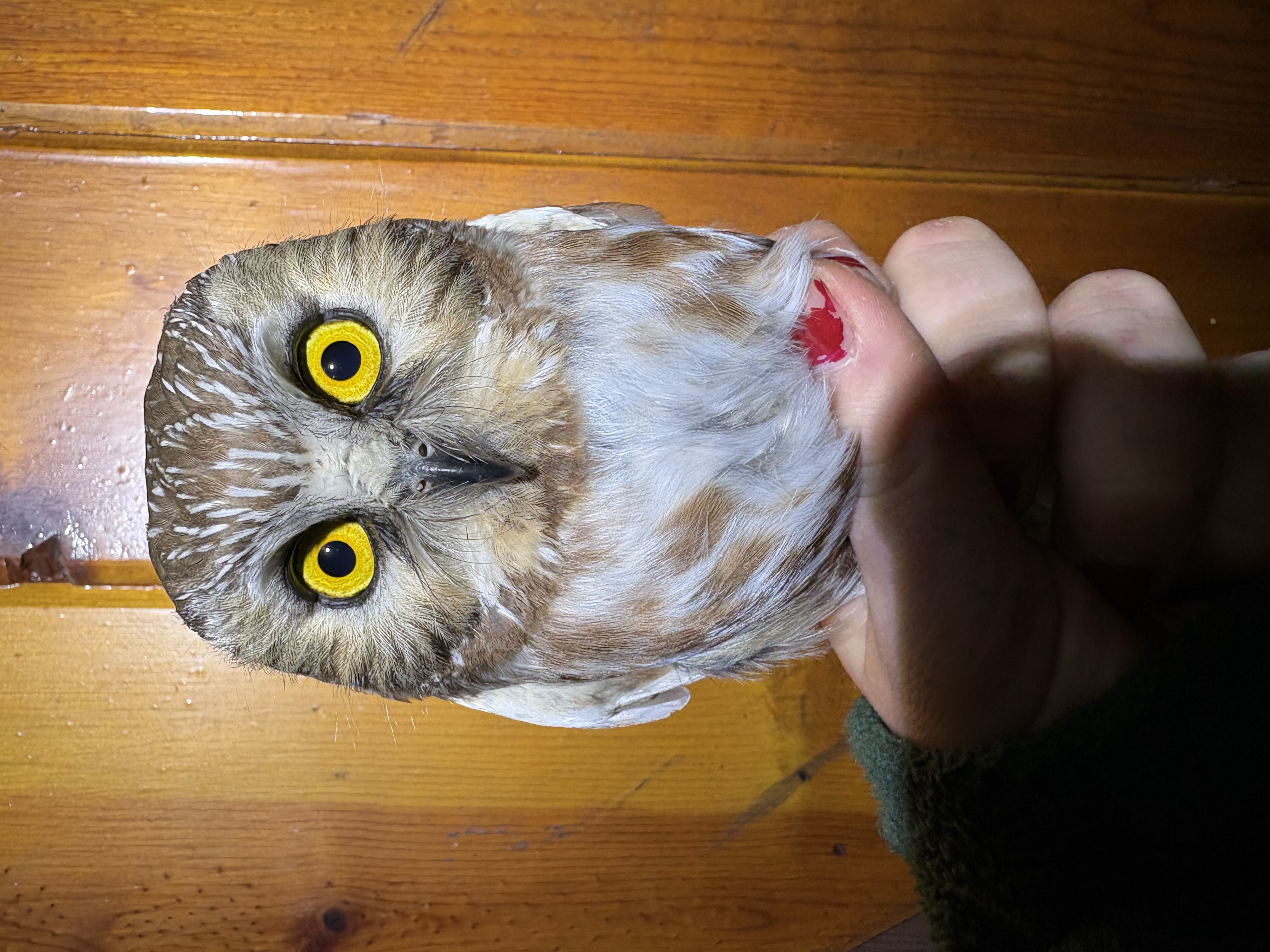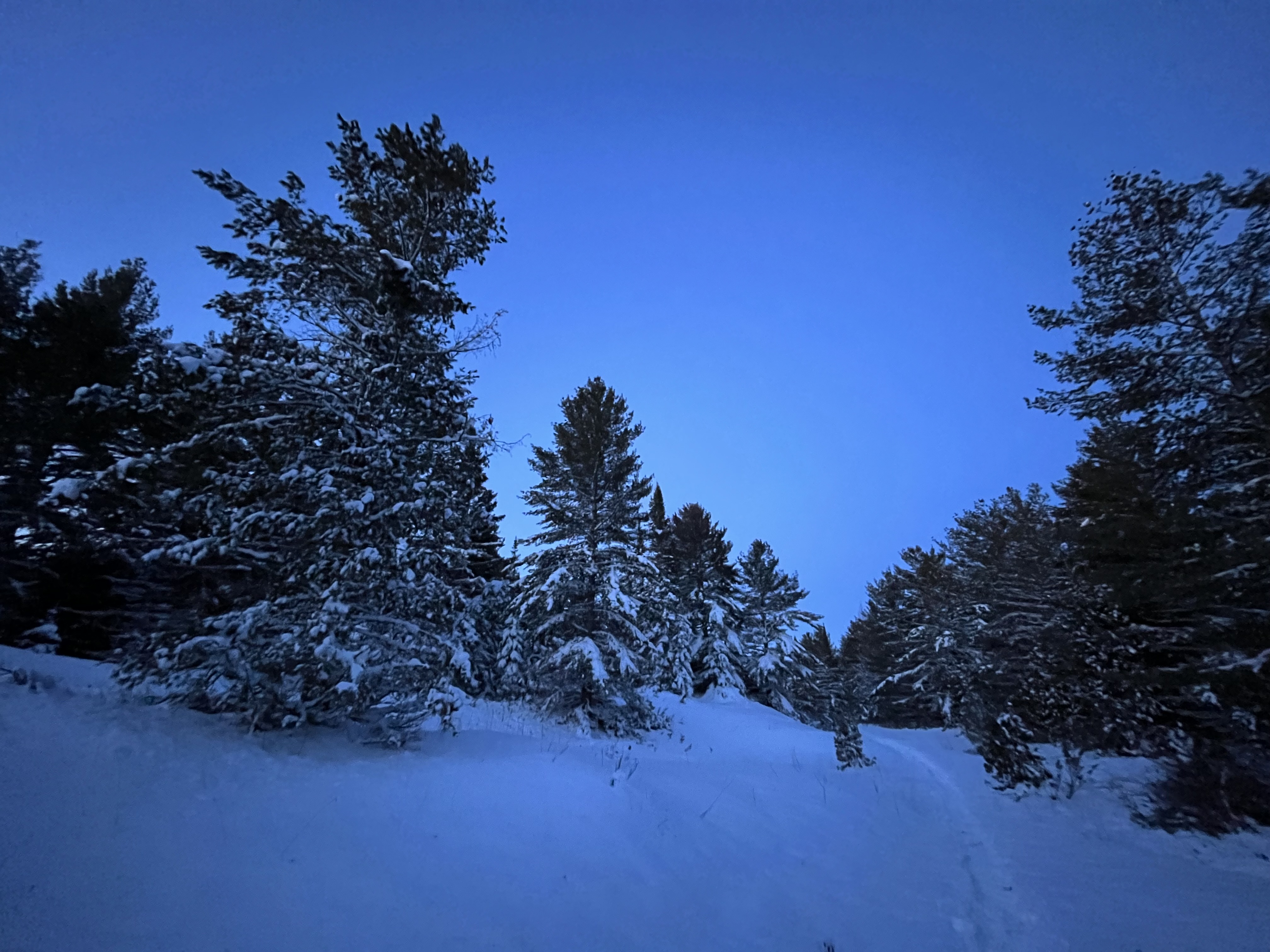Week 2 of owl banding is in the books, and unfortunately weather has kept our nets closed several nights this week. As we write this we are getting hit with a frustrating winter storm of rain, sleet, and snow (boo). Despite this though we’ve had several good nights! Our best night this week was the 26th, we caught 11 NSWO! We haven’t had anymore Long-eared encounters, though we expect more later in the season! We also haven’t had any Barred owls grace our nets again. Our total number of owls caught so far this season is 74. Outside of the nets every dusk and dawn a Great-horned owl can be heard singing, which is quite lovely while we are sleepily opening and closing the nets!

Frozen mist net from the recent ice storms.

Female Northern Saw-Whet captured this week.
This week we wanted to give everyone an understanding as to why we brave these winters conditions, stay up all night, and sleep all day to trap and band Northern saw-whet owls. Historically, Northern saw-whet owls were thought of as rare, non-migratory bird that would occasionally wander in search of food. But, due to an interesting report of Saw-whets hitching a ride aboard a steamer crossing Lake Huron, and another of a storm on the same lake killing many migrating birds, saw-whets among those found dead, ornithologists quickly began to pivot to the idea that these birds may be migratory. With dedicated researchers placing nets and opening them at night we quickly learned that: 1) Saw-whets were not in fact rare, or endangered and 2) they did in fact migrate. So why continue to capture these birds? If we discovered they migrate and aren’t rare why keep going with these endeavors?
There are lots of reasons! Most important being to continue to monitor their population! Northern saw-whet owls like some other owl species and some finch species, go through boom and bust cycles. Some years we will catch far more owls than other years. Banding these birds is one of the best ways to monitor their population changes because they can be quite cryptic and hard to find otherwise. Banding also informs us of their migration patterns and timing. Migration timing is especially interesting to monitor with climate change, changing the conditions owls are returning each year. Currently spring is arriving earlier than it has historically, can these little adjust their timing? Overall, banding owls is one of the best ways to monitor them and be aware of any dramatic changes that might threaten their future.

Trail to the nets after recent snow.
That’s it from us this week! Hope to see some of y’all out here once this yucky spring weather passes!

